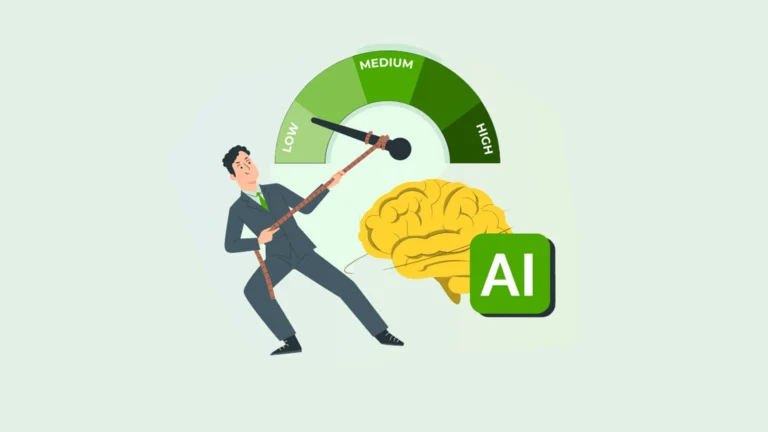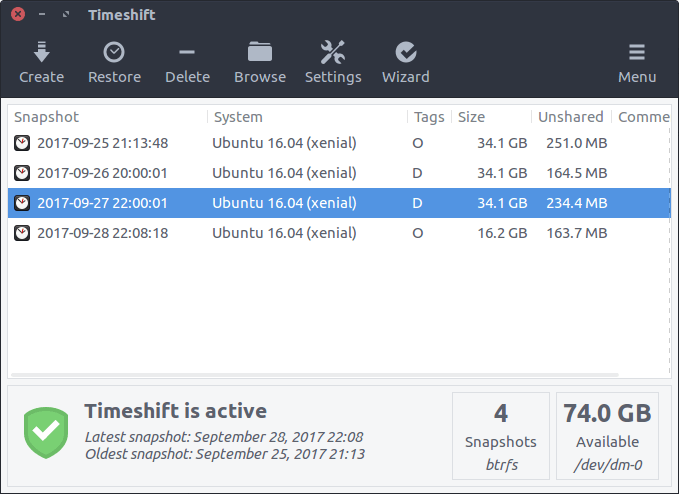Looking to dive into the world of Django?
This article explores the ins and outs of Django, from origins to popularity.
We guide you through setting up Django, creating a basic project, and working with powerful features like handling requests and defining data models. Delve into advanced functionalities, optimization techniques, and security considerations.
Stay tuned for tips on contributing to the Django community and engaging in its development.
Key Takeaways:
Contents
- Django is a popular, high-level web framework that promotes rapid development and follows a clean and pragmatic design approach.
- Setting up a basic Django project is easy and allows for exploration of its framework, request handling, data models, and data rendering features.
- Django offers advanced functionalities, optimization options, and security considerations, and encourages community contributions and engagement in its development and support.
Introduction to Django
Django is a high-level Python web framework known for its scalability, security, and maintainability in developing server-side applications, websites, and web-based services.
With its robust features, Django follows the DRY (Don’t Repeat Yourself) principle, allowing developers to build applications more efficiently by reusing code. Its built-in authentication system enhances security, while the ORM (Object-Relational Mapping) simplifies database interactions, ensuring data integrity. Django’s template system promotes clean design and enhances maintainability. By supporting rapid development and handling high traffic volumes, Django is widely used by developers to create dynamic and responsive web applications.
What is Django?
Django is a high-level Python web framework that enables developers to build web applications quickly and efficiently by providing a set of tools, libraries, and functionalities.
One of the standout features of Django is its robust architecture, structured around the Model-View-Controller (MVC) design pattern. Models define the structure of data, Views handle user interaction and business logic, and URLs map these views to specific URLs. By adhering to this pattern, Django ensures a clean separation of concerns, making code organization and maintenance more manageable.
Where did Django come from?
Django originated as an open-source project developed by a community of Python enthusiasts aiming to create a robust web framework for rapid application development.
The inception of Django can be traced back to the early 2000s when web developers faced challenges in efficiently building web applications using Python. This led to the formation of a group of programmers who shared a common goal of simplifying the web development process. Through their collaborative efforts and shared vision, Django gradually evolved into a sophisticated framework known for its scalability, security, and versatility.
The Python community played a significant role in shaping Django’s evolution by contributing code, providing feedback, and actively participating in its continuous improvement. This collective effort not only ensured the framework’s quality and reliability but also reflected the spirit of open-source development.
How popular is Django?
Django has gained significant popularity among developers and tech companies due to its scalability, maintainability, and the ease of building robust web applications.
With a simple yet powerful design structure, Django offers developers a framework that promotes rapid development, clean and pragmatic coding, and the ability to scale applications efficiently.
One of the key reasons behind the adoption of Django is its versatility in handling complex functionalities and high traffic volumes without compromising performance. Companies ranging from startups to large enterprises have chosen Django for its robust security features, extensive documentation, and strong community support.
Getting Started with Django
Embark on your Django journey by setting up this powerful web framework to create scalable, maintainable, and portable web applications using Python.
When you begin your exploration of Django, you’ll first need to install Python on your system if it’s not already installed. Python serves as the foundation for Django, enabling you to take advantage of Django’s powerful features for web development. Once Python is set up, the next step is to install Django using pip, Python’s package installer. Django’s emphasis on DRY (Don’t Repeat Yourself) principles and its built-in admin interface greatly simplify the development process, allowing you to focus on building feature-rich web applications efficiently.
Setting up Django
Setting up Django involves installing the framework, configuring the development environment, and creating a virtual environment to manage dependencies.
Installation of Django can be done using pip, the Python package manager, by running the command pip install Django in the terminal. After installation, the next step is to set up the development environment by creating a new Django project using the command django-admin startproject projectname. Creating a virtual environment with virtualenv or venv helps isolate project dependencies and avoids conflicts with other projects.
Exploring the Django framework
To delve deeper into Django, explore its robust features, components, entities, and design patterns that streamline the web development process.
One of the key aspects that make Django highly efficient is its MVC (Model-View-Controller) architecture. This division of logic allows for the separation of data access, business logic, and user interface components.
Plus MVC, Django also follows the DRY (Don’t Repeat Yourself) principle, which minimizes repetition of software patterns and promotes code reusability.
Furthermore, Django includes a robust ORM (Object-Relational Mapping) layer that enables developers to interact with databases using Python classes. This simplifies querying and manipulating data, making the development process more intuitive and efficient.
The admin interface in Django is another standout feature, offering a customizable, user-friendly interface for managing site content without the need for manual coding. This built-in feature saves time and effort, especially during the development and maintenance phases.
Creating a basic Django project
Jumpstart your Django journey by creating a basic project that includes defining applications, setting up models, views, templates, and configuring URLs for seamless navigation.
When starting a new Django project, you first need to create a project directory and navigate to it in your command line interface. Within this directory, you can run the command ‘django-admin startproject nameofproject’ to create the initial project structure. This will create a directory with settings.py, urls.py, and other necessary files.
Next, you can create your first Django app using the command ‘python manage.py startapp nameofapp’, which will generate the app directory with files such as models.py, views.py, and templates directory.
Working with Django
Explore the versatility of Django by handling requests efficiently, defining data models, and rendering data seamlessly using its powerful database and HTTP capabilities.
When working with Django, one of its strengths lies in how it handles incoming requests. Django’s URL dispatcher routes these requests to the appropriate view functions, allowing for clear separation of concerns between different parts of the application.
Django’s ORM (Object-Relational Mapping) simplifies data model definitions by abstracting the database structure into Python objects. This makes it easy to define relationships between different data entities and perform complex queries.
Django provides robust tools for data rendering. Views can leverage Django’s template system to generate HTML dynamically, allowing for seamless presentation of data to users. Django’s serialization capabilities enable the conversion of querysets and model instances into JSON or other formats for API responses.
Handling requests in Django
In Django, handling requests involves mapping URL patterns to views, processing HTTP requests, and generating appropriate responses for client interactions.
When a request is made in a Django application, the URL dispatcher first matches the requested URL against the patterns defined in the URLconf to determine which view to invoke.
Views in Django are Python functions or classes that receive web requests and return web responses. These views are responsible for processing the request data, interacting with the database if necessary, and generating the appropriate response to be sent back to the client.
The URLs in Django, defined in the URLconf, act as a bridge between the requested resource and the appropriate view that should handle it. This clear separation of concerns between URLs and views enhances the maintainability and scalability of Django projects.
Defining data models in Django
Data modeling in Django involves defining entities, objects, and relationships to structure data efficiently within the framework’s database backend.
Data modeling plays a crucial role in defining the blueprint of how data will be structured and stored in a Django project. Entities are representations of real-world objects or concepts, translated into tables in the database. Objects, also known as instances of entities, hold specific data points and attributes within the defined structure. Relationships establish connections between different entities, depicting how they interact and associate with each other.
By creating clear data models, developers can ensure data integrity, optimize querying performance, and maintain a well-organized backend system. Utilizing Django’s powerful ORM (Object-Relational Mapping), these models can be seamlessly integrated into the database schema, enabling smooth data operations and retrieval.
Querying and rendering data in Django
Experience the power of Django in querying data from databases, rendering information through templates, and presenting dynamic content on web pages.
In Django, querying data from databases is achieved through the use of the Django ORM (Object-Relational Mapping), which allows developers to interact with the database using Python objects rather than writing raw SQL queries. This not only simplifies the process but also provides a more secure way of handling database operations.
In terms of rendering data using templates, Django’s template system comes into play. Developers can create HTML templates with embedded Python code to dynamically generate content based on the data fetched from the database. This separation of logic and presentation ensures a clean and maintainable codebase.
Dynamic content on web pages, such as real-time updates or personalized recommendations, can be implemented in Django by leveraging features like template inheritance, context processors, and Ajax requests. These functionalities enhance the user experience by making the web application more interactive and engaging.
Advanced Features of Django
Unlock the full potential of Django by looking into its advanced functionalities, optimizing applications for performance, and ensuring robust security measures.
In terms of optimizing performance, Django offers a wide array of tools, such as advanced caching mechanisms and efficient database querying techniques. These features can significantly enhance the speed and responsiveness of your web applications. Moreover, Django’s security enhancements go beyond the basics, with built-in protection against common threats like SQL injection and cross-site scripting (XSS). For scalability, Django provides scalability measures like load balancing and horizontal scaling to handle increasing traffic demands effectively.
Exploring advanced functionalities
Discover the intricate details of Django’s advanced functionalities, including custom components, design patterns, and specialized entities that elevate the capabilities of your web applications.
One of the most prominent features of Django is its support for custom components, allowing developers to create tailored solutions for their specific project requirements. By leveraging various design patterns such as Model-View-Template (MVT) architecture, developers can ensure a clear separation of concerns and maintainability in their codebase. Django provides specialized entities like class-based views and middleware that streamline the development process and enable the implementation of complex business logic with ease.
Optimizing Django applications
Fine-tune your Django applications by optimizing performance, enhancing scalability, and implementing best practices to ensure efficient operation and user satisfaction.
To optimize performance, consider utilizing Django QuerySet API efficiently by minimizing database queries and prefetching related data. Enhancing scalability involves deploying your Django application on scalable cloud infrastructure like AWS or Google Cloud, utilizing caching mechanisms such as Django’s built-in cache framework or external tools like Redis. Implementing best practices includes adhering to Django’s project structure, following PEP 8 guidelines, using Django Debug Toolbar for performance monitoring, and implementing security measures like using HTTPS and securing sensitive data.
Security considerations in Django
Prioritize security in Django development by addressing potential vulnerabilities, implementing robust protection mechanisms, and ensuring secure authentication processes for user data.
In terms of vulnerability assessments, it is crucial to conduct regular security audits and penetration testing to identify any weak points in the application. These assessments help in proactively addressing vulnerabilities before they can be exploited by malicious actors.
To enhance the protective measures, developers should adhere to best practices such as input validation, proper error handling, and managing sensitive data securely by encrypting it in transit and at rest.
Robust authentication protocols like multi-factor authentication (MFA) and implementing secure login functionalities play a vital role in safeguarding user data from unauthorized access.
Contributing and Community
Engage with the vibrant Django community by exploring avenues for contributing to the framework’s development, seeking support, and actively participating in the collaborative ecosystem.
One of the best ways to get involved is by joining discussions on forums, attending meetups, or even contributing code to the Django project itself. By collaborating with other developers, you not only enhance your skills but also build valuable connections within the Django community. Participating in open-source projects associated with Django can provide you with hands-on experience and a platform to showcase your expertise.
Ways to contribute to Django
Contribute to Django’s growth by submitting code improvements, enhancing documentation, and participating in testing efforts to strengthen the framework’s functionality and reliability.
One of the ways to help in enhancing Django is by submitting code enhancements through pull requests. By identifying areas for optimization or bug fixes, contributors can directly influence the framework’s development.
Taking part in improving the documentation not only ensures clear guidance for users but also simplifies the onboarding process for new developers. Engaging in testing activities by running tests and reporting bugs plays a crucial role in maintaining the high quality and robustness of Django.
Getting involved in Django development
Immerse yourself in the world of Django development by participating in community projects, collaborating with other developers, and contributing to the evolution of this dynamic web framework.
Engaging with the Django community not only allows you to refine your skills but also offers a platform to exchange innovative ideas and best practices. Through active participation, you can gain valuable insights from seasoned developers and work together to address common challenges faced in web application development. Contributing to Django’s ongoing improvement not only enhances its capabilities but also fosters a sense of pride and ownership in the larger developer community.
Support and engaging with the community
Leverage the Django community for support, guidance, and networking opportunities by attending events, engaging in discussions, and tapping into the collective expertise of fellow developers.
One of the biggest advantages of being part of the Django community is the wealth of resources available at your fingertips. By participating in events such as DjangoCon and local meetups, developers can stay updated on the latest trends and best practices, directly interacting with industry experts and like-minded individuals. Engaging in discussions on forums like Stack Overflow, Reddit, and the official Django mailing list enables you to seek advice, share your experiences, and collaborate on problem-solving.
Frequently Asked Questions
What is Django and why is it popular?
Django is a high-level Python Web framework that encourages rapid development and clean, pragmatic design. It is popular because it simplifies the process of building web applications, making it easier and faster for developers to create robust and scalable projects.
What are the key features of Django?
Some key features of Django include its built-in admin interface, automatic URL routing, object-relational mapper (ORM), template engine, and security features. These features make it an ideal choice for building complex and secure web applications.
How does Django promote rapid development?
Django provides a set of tools and libraries that enable developers to quickly build web applications without having to reinvent the wheel. Its codebase is well-structured and follows the “Don’t Repeat Yourself” (DRY) principle, which allows for efficient and rapid development.
What is the philosophy behind Django’s design?
Django’s design philosophy is focused on making it easy to build complex web applications while keeping the code clean and maintainable. It promotes the use of reusable components, encourages efficient development, and prioritizes security and scalability.
How is Django different from other web frameworks?
Django sets itself apart from other web frameworks by offering a comprehensive set of features and tools, a well-structured codebase, and a thriving community. It also follows best practices and encourages developers to write clean and maintainable code.
What types of web applications can be built with Django?
Django is suitable for building a wide range of web applications, including content management systems, social networks, e-commerce sites, and more. Its versatility, scalability, and robustness make it a popular choice for both small and large projects.



![32 Best File Managers and Explorers [GUI + CLI] for Linux in 2024](https://charliesgarage.com.au/wp-content/uploads/2025/02/32-best-file-managers-and-explorers-gui-cli-for-linux-in-2024-768x616.png)

